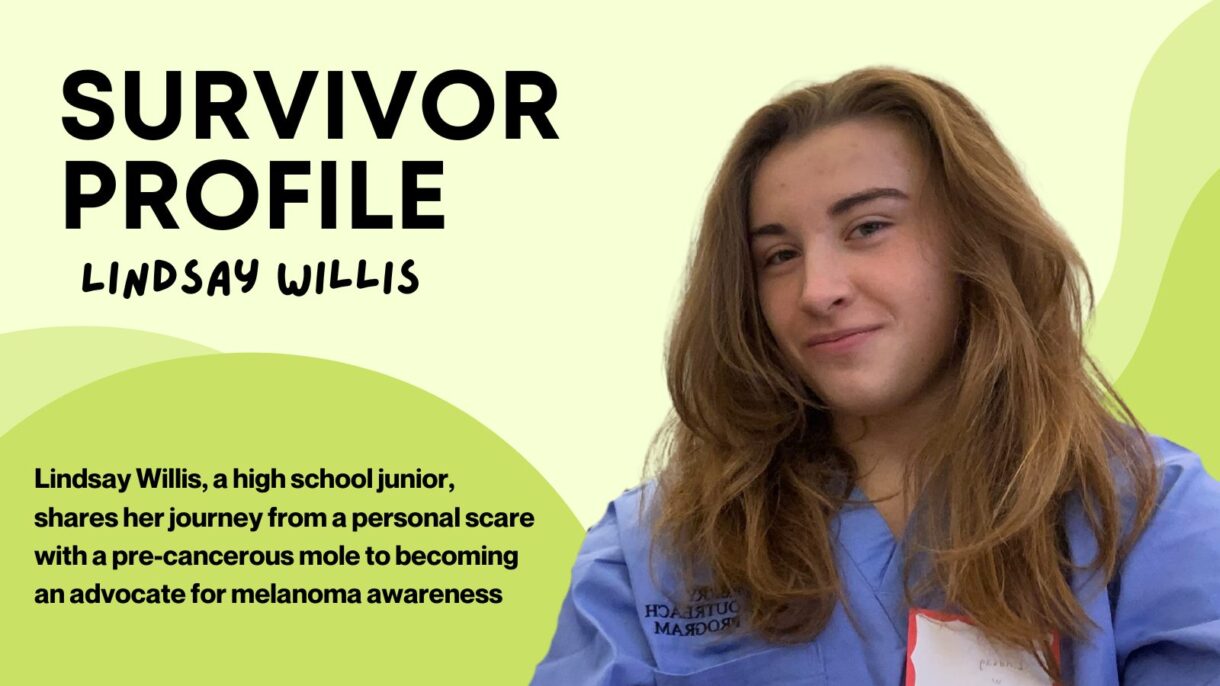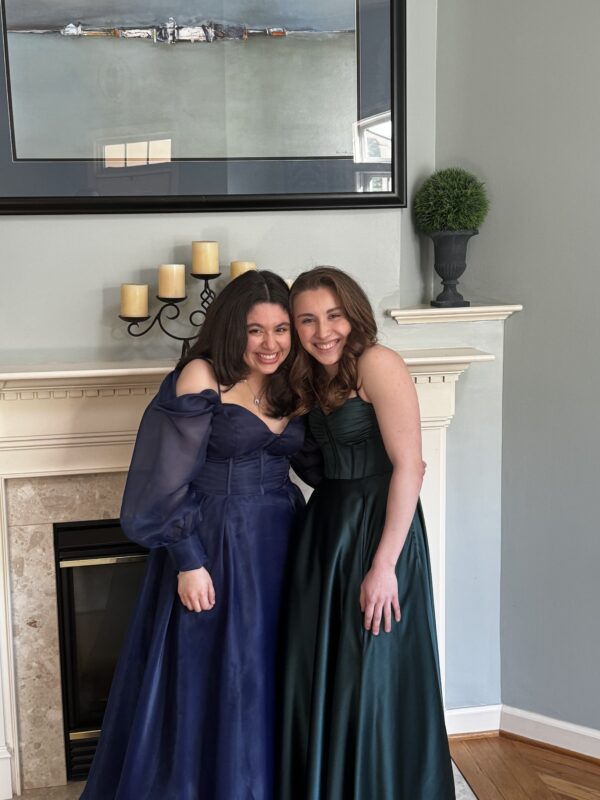Featured Survivor Story:
From a Scare to Awareness: Lindsay Willis’s Mission to Educate on Melanoma Risks

By Mara Klecker
Lindsay Willis grew up hearing her mother’s warnings about skin damage and skin cancers and remembers hearing about the in situ moles that her mom had removed.
“She’s always been warning me and my brothers about protecting and checking our skin, making sure there are no moles that are changing,” Lindsay said. “So that’s always been in the back of my mind.”

Lindsay Willis Stage 0, In-Situ Melanoma Survivor
That’s why, while at a routine dermatology appointment, Lindsay asked the doctor about a mole on her wrist. While sitting in the doctor’s office, she’d compared her mole to photos on a poster hanging in the room – one that explained what the warning signs of melanoma can look like.
“I saw that it was almost identical…it scared me,” she said. But the dermatologist told Lindsay because of her young age, it was likely nothing to worry about. Lindsay’s mom thought about her own history with pre-melanomas and insisted her daughter’s mole be removed, just in case.
“Thankfully she did because it turned out to be pre-cancerous melanoma,” Lindsay said. “That moment really sparked my interest in melanoma awareness and research. There’s no age or skin color that exempts you from it. Everyone can have melanoma.”
In the years since having her mole removed, Lindsay – who recently wrapped up her junior year of high school – has focused on spreading awareness about the risks of sun damage, especially among her peers. She spent much of her sophomore year learning about infrared spectroscopy as part of a research project focused on early melanoma diagnosis.
But she didn’t want her work to end with a class project. That’s why she contacted AIM at Melanoma and volunteered with the Sun Safety Initiative.
“It’s been really helpful to have all this information to share with others around me and encourage them to get their moles looked at, especially because I know they can change so fast,” Lindsay said.
She said many of her classmates didn’t know about the “ABCDEs of skin cancer” chart or the real risks of tanning until she presented her project. To spread awareness, she’s shared AIM’s Melanoma 101 section on the website with several friends and family members.
“It’s so important that people know melanoma can happen to anyone, not just older people,” she said. “Having that knowledge is important so you can be able to detect it yourself and advocate for yourself.”
As Lindsay heads into her senior year of high school, she’s considering pursuing a career in dermatology. In the meantime, she’ll keep sharing her story and pushing for broad melanoma awareness amongst her peers and community.
“My goal in the future is just to reach as many people as I possibly can,” she said. “I want high schoolers to not worry so much about tanning and just embrace and protect the skin they have.”

Sun Safety Tips:
- Wear Sunscreen Daily: Apply broad-spectrum SPF 30 or higher sunscreen to all exposed skin, even on cloudy days. Reapply every two hours, or more often if swimming or sweating.
- Seek Shade: Avoid direct sunlight, especially between 10 a.m. and 4 p.m., when UV rays are strongest.
- Wear Protective Clothing: Choose clothing that covers your arms and legs, and wear a wide-brimmed hat and sunglasses that block UV rays.
- Avoid Tanning Beds: Tanning beds increase your risk of melanoma and other skin cancers.
Skin Examination Tips:
- Perform Regular Self-Exams: Check your skin monthly for any new or changing moles, spots, or growths. Use a mirror or ask someone to help check hard-to-see areas.
- Use the ABCDE Rule: Look for Asymmetry, Border irregularity, Color variation, Diameter greater than 6mm, and Evolving or changing features in moles or spots.
- Consult a Dermatologist: If you notice any changes or have concerns, see a dermatologist promptly for a professional evaluation.
Education and Advocacy Tips:
- Share Knowledge: Educate friends and family about the risks of melanoma and the importance of sun protection.
- Promote Awareness Campaigns: Get involved with organizations like AIM at Melanoma and participate in or support our awareness initiatives.
- Encourage Regular Screenings: Advocate for routine skin checks, especially for those with a history of skin cancer or high sun exposure.
Remember to always prioritize your skin health and be proactive in early detection and prevention of melanoma. With knowledge, awareness, and action, we can work towards reducing the impact of this disease on individuals and families.
Recent Posts

Update on the State of Vaccines for Melanoma

Healing Through Creativity: Art Therapy in Cancer Care

Side Effect Central: Lichen Planus Explained

Behavioral Addiction Responsible for Excessive Indoor Tanning


